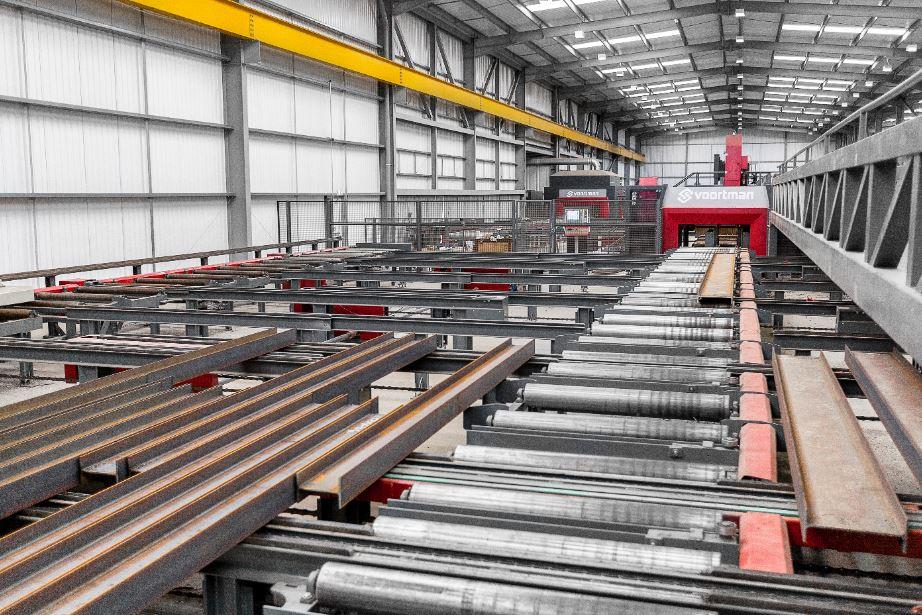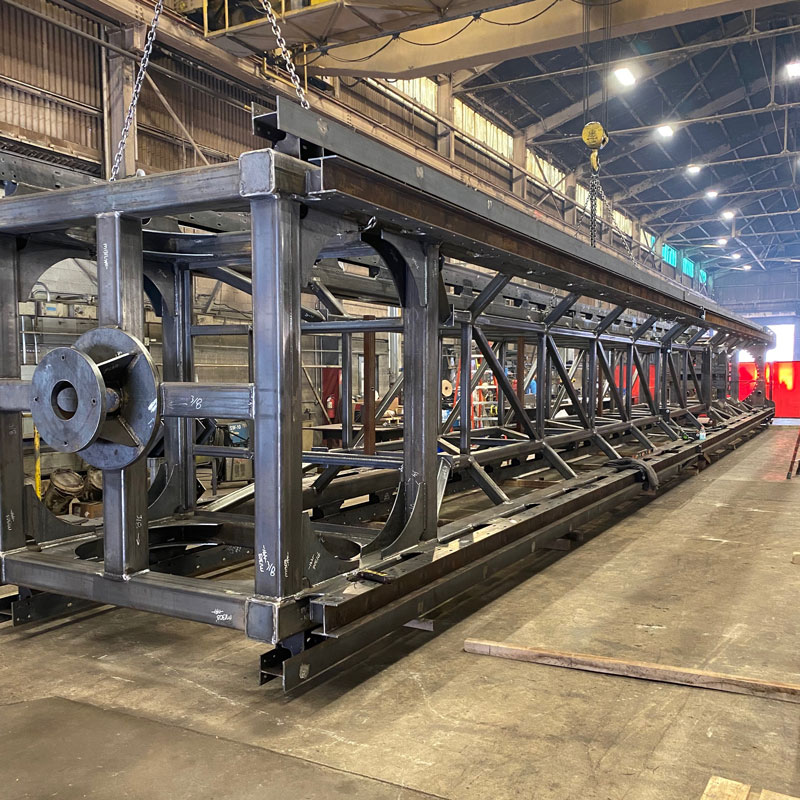Alpha Reo: Leading the Way in Reinforced Steel Solutions
Alpha Reo: Leading the Way in Reinforced Steel Solutions
Blog Article
Innovative Fads in Steel Fabrication: Enhancing Resilience and Precision
In the world of steel construction, the pursuit of resilience and precision has actually brought about a wave of innovative patterns that are improving the industry. From advancements in welding technologies to the integration of robotic automation in construction procedures, the landscape of steel production is developing rapidly. High-strength alloy advancement, coupled with the application of 3D modeling and simulation software, is pressing the boundaries of what is possible in regards to architectural stability and precision. The growing focus on sustainable methods in steel production is not only driving performance but likewise cultivating a more ecologically aware method to manufacture. These trends are not just forming the present yet additionally laying the groundwork for the future of steel manufacture, promising additional improvements in longevity and precision.
Advanced Welding Technologies
In the world of steel manufacture, the adoption of sophisticated welding modern technologies has dramatically revolutionized the sector's approach to attaining exceptional high quality and precision in architectural welds. Advanced welding technologies, such as laser light beam welding and rubbing mix welding, have become game-changers in the field. Laser beam welding employs a focused laser beam to sign up with steel elements with exceptional precision and speed, making it suitable for complex designs and slim products. On the other hand, rubbing mix welding produces exceptionally strong bonds by mechanically intermixing the molecules of the materials at the joint, removing the demand for melting the metal. These technologies supply numerous advantages, consisting of lowered heat-affected areas, marginal distortion, and boosted mechanical buildings in the bonded joints. By leveraging these sophisticated welding techniques, steel makers can boost the durability, toughness, and accuracy of their architectural welds, meeting the significantly requiring demands of modern building and construction jobs.
Robotic Automation in Manufacture
Embracing robotic automation has actually become a foundation of modern steel construction techniques, improving and simplifying processes effectiveness across the market. Robotics are transforming the method steel parts are manufactured, providing unparalleled precision and rate while lowering human error. These automated systems can handle repeated jobs with constant accuracy, resulting in greater quality final product.
One trick advantage of robot automation in steel manufacture is the capability to function all the time without fatigue, substantially increasing production result. This continual operation decreases downtime and speeds up job timelines, eventually conserving costs for makers. Additionally, robots can be set to execute elaborate jobs that may be tough or hazardous for human workers, boosting security in the workplace.
Moreover, robot automation enables smooth assimilation with other electronic technologies, such as computer-aided layout (CAD) software and Web of Things (IoT) systems (metal fabrication melbourne). This interconnected strategy enhances interaction in between different stages of construction, maximizing workflows and making sure real-time monitoring and control. As the steel fabrication market remains to evolve, robotic automation sticks out as a transformative pressure driving efficiency and precision in producing procedures

High-Strength Alloy Development
The development of high-strength alloy advancement in steel construction is improving the sector's approach to improving product resilience and efficiency. High-strength alloys are crafted to exhibit exceptional mechanical residential properties, such as raised tensile toughness, sturdiness, and deterioration resistance contrasted to conventional steel grades. By incorporating these advanced alloys right into manufacture procedures, makers can create components that withstand higher stress and anxiety degrees and extreme atmospheres, bring about even more trustworthy and long lasting final result.
One key advantage of high-strength alloy advancement is the ability to lower product density without jeopardizing structural integrity. This not just leads to lighter-weight elements but also adds to set you back financial savings and boosted performance in manufacture and setting up procedures. Furthermore, the enhanced strength-to-weight ratio of these alloys allows for the design and building and construction of frameworks with higher load-bearing abilities while minimizing total weight.
3D Modeling and Simulation Software Program
Improvements in steel fabrication procedures have actually been dramatically pushed by the integration of innovative 3D modeling and simulation software program tools. These devices allow producers to create comprehensive digital models of their jobs, allowing them to visualize the final item with accuracy before any type of manual labor begins. By mimicing numerous stress elements, ecological problems, and architectural loads, producers can optimize designs for enhanced longevity and performance. Additionally, 3D modeling and simulation software application simplify the production process by determining prospective concerns early visit their website on, decreasing the requirement for pricey rework and decreasing material waste.

Sustainable Practices in Steel Production
Integrating sustainable methods right into steel manufacturing procedures is crucial for reducing ecological effect and ensuring long-lasting resource accessibility. One vital sustainable method is the adoption of energy-efficient technologies to lower greenhouse gas discharges throughout the steel manufacturing procedure. This consists of making use of sustainable energy sources, such as solar or wind power, to power steel plants and applying energy-efficient tools to enhance energy usage.
An additional crucial element of lasting steel production is the accountable sourcing of basic materials. This involves making sure that the iron ore and other resources made use of in steelmaking are gotten from environmentally friendly and moral sources. By promoting openness in the supply chain and adhering to rigorous ecological requirements, steel makers can lessen the adverse impacts of source removal on regional ecological communities and neighborhoods.

Final Thought
In verdict, the cutting-edge fads in steel fabrication such as sophisticated welding modern technologies, robotic automation, high-strength alloy growth, 3D modeling and simulation software, and lasting look at here practices are improving the longevity and precision of steel products. These improvements are changing the steel fabrication industry by enhancing effectiveness, sustainability, and top quality. It is clear that the future of steel construction depends on welcoming these cutting-edge technologies to satisfy the demands of modern building and construction and production industries.
In the realm of steel manufacture, the pursuit of sturdiness and accuracy has actually led to a wave of innovative patterns that are improving the market.In the realm of steel fabrication, the adoption of advanced welding modern technologies has substantially changed the market's technique to accomplishing premium high quality and accuracy in architectural welds. As the steel construction market proceeds to progress, robot Full Report automation stands out as a transformative force driving effectiveness and precision in making processes.
Moreover, reusing and recycling steel scrap and waste materials play a substantial function in improving the sustainability of steel production. steel fixing.In conclusion, the ingenious fads in steel fabrication such as sophisticated welding modern technologies, robotic automation, high-strength alloy development, 3D modeling and simulation software program, and lasting methods are improving the longevity and accuracy of steel products
Report this page